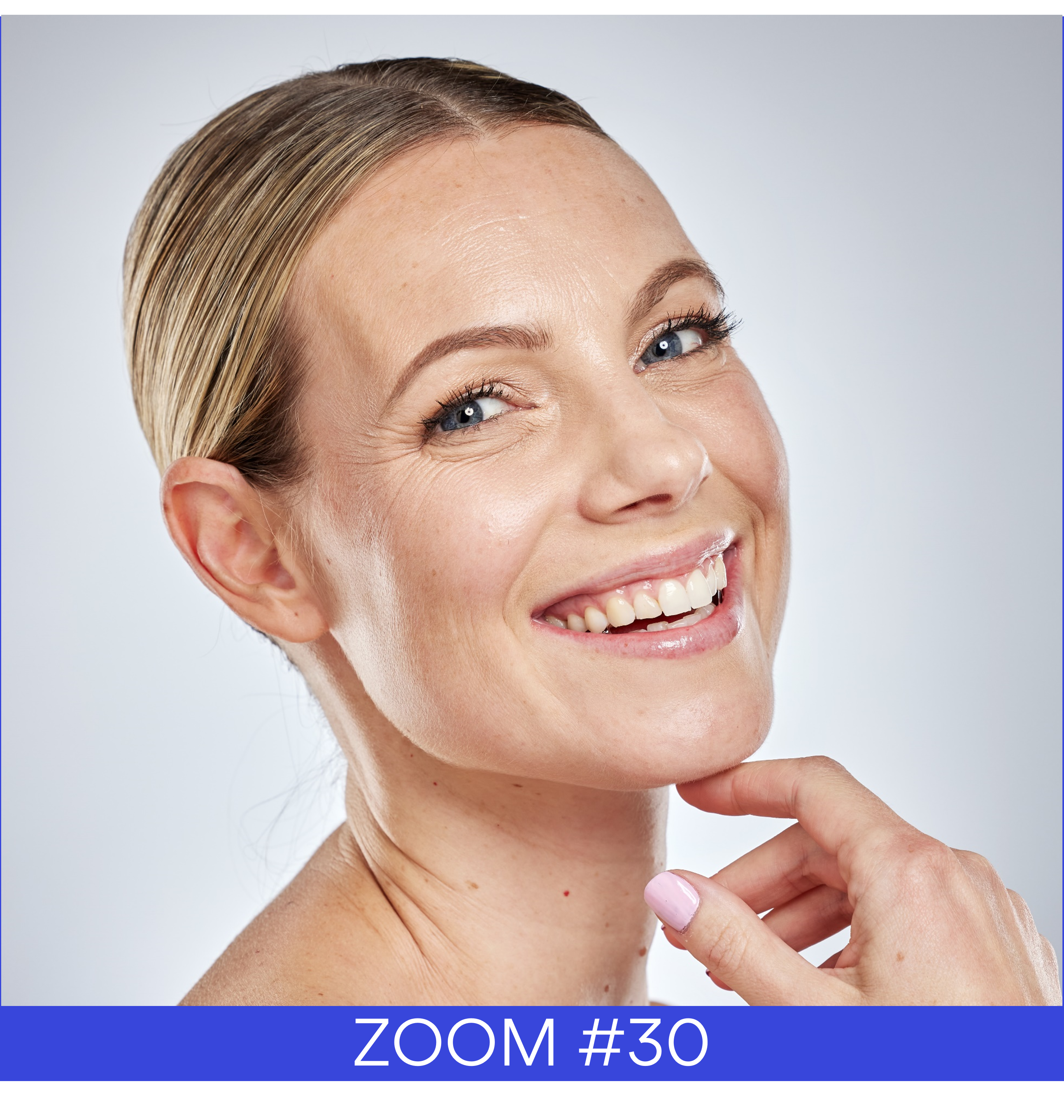By Michael Anthonavage is the current VP of Operations and Technology at Eurofins CRL Cosmetic Testing
Upload the article : How to Design Clinical Safety and Claim Support Studies for Skin Care Products.v2
Having lived on both sides of the fence in terms of R&D, Technical Marketing and product development, I have seen and experienced many situations that in retrospect could have gone a lot smoother. Now that I am on the service side of the industry, I find myself spending a lot of time instructing potential clients on how to get their product(s) to market. This includes many hours of consultation around how to vet their products for efficacy as well as satisfying the industry requirements for safety. Below you will find some helpful hints and dos and don’ts around executing and delivering good claims with the proper safety profiles
Nothing makes an R&D director happier than providing a validated sound scientific dossier to his/her marketing team on a technology or formulation that has gone through months, if not years, of development. From inception to market, there are endless meetings about progress, budgets, resource allocation and most of all data generation and what to do with it all. When you think about all of the time and energy you have spent on this one aspect of your pipeline, validating your work becomes paramount so that it is universally accepted by not only the market place but by your management and investors alike. Ironically, this is the most crucial and usually the most expensive point of the project as a whole. What can you do to ensure that you are efficient in your success?
In order to properly validate your mechanism of action and support your claims, an outside lab is usually brought into the fray for good reason; you want an objective 3rd party verification of all you have done to this point. This will entail having all of your project management skills ready to go. This is akin to getting to the championship game in your favorite sport. The whole season now rides on how well you do in the next game or series. How do you position yourself for success? Below you will find some dos and don’ts that I have been faced with, both as a client and as a provider of clinical testing for personal care and cosmetic products.
From the service side of the industry, I find that many clients come to the table thinking they are ready to test with a 3rd party laboratory, however, after the first meeting is over, they are usually going home with a to do list longer than the questions they had for me. So, ask yourself, are we ready to test? No matter your title or level of responsibility, you must build a team to answer this question. Having a team in place that represents all facets of the project, including where you have been and where you are going is the first step. Understanding how you landed on the functional claims, category and target consumer/customer are going to lay the foundation of what type of 3rd party lab you will need and what type of study design is warranted, as not all testing labs are created equal. All of your team members must bring their information and needs to the table to answer that question before you pick up the phone and ask for 3rd party commitment. Have a timeline built and map out the approval process commensurate with your companies policies. There are some companies that inherently have more red tape than others. Know and understand your internal process before bringing in outside counsel. This will certainly convey confidence and keep you in the driver’s seat.
Having a good mix of representation on your team of R&D, marketing, operations, regulatory and sales especially on the initial meetings with a 3rd party laboratory will ensure that everyone’s needs are accounted for and visible. This will also make for a much smoother utilization of data when it comes time to launch. Some of the best launches are the result of this synergy alone. Once you taste success in this manner there is no going back. Having these internal meetings will help with those problems.
Gathering, moving and analyzing information is the norm in today’s market place and is critical for success. It is imperative that the team you build have an open channel of communication within its team members and the lab when necessary. As the team leader/project champion, you must know who your go to resource people are. There are often cases of misplaced assumptions on who knows what, and who is responsible for deliverables and decisions. Many times I work with a project team looking to perform validation studies only to find that delays are imposed from executing as planned because the test materials are not available or not delivered on time to the testing facility. There are many reasons for this. Some examples include delays in release from QA, test materials have not passed physical or chemical stability, last minute changes to the formulation design and for our international clients, test materials getting stuck in customs at the border. All of these issues can be mitigated with proper channels of information being open. If one person is the gate keeper of all the information, that person needs have access to all facets of the project and that includes information that the team members possess. Establishing portals for information sharing especially when collaborations exist over multiple time zones is something to also consider. At the end of the day, proper, concise and efficient communication is paramount to keeping all stakeholders informed and abreast of the status of your project.
Have a holist view of the expectations and goals. I always say to prospective clients, “work your project backwards”. Assume that you get the best data possible, what will you say about it? Understanding the end game allows everyone to see the goal in the detail that is needed. Having a vague undefined goal is grounds for confusion, uncertainty and delays to market. Having the goal in mind is also crucial for developing the protocol to get you to the desired objective. One of the most common delays and unpredicted expenses companies incur are due to last minute protocol changes. These cause delays in final approvals, delays in recruiting the required subjects, and ultimately delays in study execution at the 3rd party lab. By not having your team review protocols early on, potentiates high risk for decision that are made before final protocols are signed. This leads to re-work, delays and loss of access to resources, equipment and personnel needed to perform the study.
Budget, budget, budget, how many times have we all heard, “we can’t do that, it’s too expensive”? Have a deliberate budget in mind when you are ready to validate claims. You can start off shooting for the stars but inevitably, you land back on earth holding your budget in hand saying, “we need a new plan”. Match your needs within your budget. So many clients come to me with a beautiful study design only to realize that it is light years beyond what they budgeted for. Factors that drive price in any clinical study are of course the time and resources allocated by the lab; however, there are study design oversights that drive up study costs significantly. Having time points that can be managed Monday through Friday and within a regular work day reduces overtime commitment by the lab. Choosing technicians to perform evaluations other than MD (where appropriate) is another way to save money. IRB cost, interim data requests, expedited reports and last minute changes to the schedule once protocols are signed are huge drivers of cost, and many of these can be avoided with proper planning and good team building.
Validation of claims or target mechanism of action is in the eyes of the beholder. Keep in mind, in the personal care industry, consumer perception trumps all. If your technology/finished product does not deliver on consumer perceivable results, you most likely will not get a return customer and the market will quickly loose interest in your product. The good news is, consumer use studies are not that expensive. Know your consumer base, ask the right questions and provide the best use instructions possible. Many clients like to marry consumer use data with objective instrumental measures and/or expert grading. This is the trifecta of clinical study success. If you can show agreement with consumer perception, instrumental measures and expert assessment, you have a solid foundation for a bullet proof marketing campaign.
Consider the consumer experience when designing your study. Have you prepared use instruction that best represent how the product will be used? Do you have a mechanism in place to understand off indication used of your product? Factoring in these questions is critical to reduce the variation in consumer generated data. People in general are variable in their recollection of experiences. Having a way to reduce this through easy to read, easy to understand, and simple use instructions makes for a happy experience. Consumers/subjects evaluating a product will, when asked, provide valuable negative feedback as well. Ask for it, don’t wait for it. It’s better to understand the short comings of using your product before it hits the market. Is your product providing comfort and ease of use? If so, it will be viewed in a better light. Ask for diary comments, proof of use, have a hot line into the testing company for adverse event reporting. All of these provide subjects on your study with a positive experience which will ultimately be reflected in your data on product performance.
Marketing should play an integral role as a co-champion of the validation process. They should be able to translate the science to consumer language which in turn should be converted to questions used for consumer perception studies. Marketing should also understand what the competition in their particular category is saying about similar products. 3rd party labs do not make marketing claims; they provide data to support them. Your marketing team should also have a hot line to a regulatory expert in the geographic regions of where you plan to sell your product. So much for world harmonization, the individual regulatory requirements worldwide are ever growing further apart and complex. Don’t spend your valuable time and resources developing a technology only to find out, you can’t sell it in your target region because of regulatory hurdles, restrictions on trade and/or miss alignment with what is culturally acceptable.
Finally, what to do with your data? Chances are, you may be in charge of getting a 3rd party laboratory to perform some validation or claim support studies but you don’t remember the first thing about statistics. Your report comes back from the lab with P values and Z scores. Paragraphs about significant and non-significant data along with ANOVA analysis….YIKES!, what does all of this mean?
Did you set up the study to have the data be understandable or are you counting on one of your science team members to make sense of it all? Is the data audited? So many times as a client, I have asked for the raw data to review and “crunch” myself to better understand the relationships. On the flip side, as a testing lab, I have had clients spend significant time and money on a study and not know what their data means or how to apply it back to the original objective of the study.
No matter how you get to your goal, always keep in mind the fundamentals. They are so easy to take for granted and in retrospect, the lack of attention to the fundamentals is the very reason why projects don’t go as planned. So, build an effective and comprehensive team, know your budget limitation upfront, manage information in and out of the team efficiently, understand the expectations and stick to the plan. Understand the needs of your customer and translate the data in way they understand. Last but not least, know your market and consumer front to back and translate data so that they both understand it to the point at which they come back for more.
Author’s Biography:
Michael Anthonavage is the current VP of Operations and Technology at Eurofins CRL Cosmetic Testing. Michael has 25+ years of experience in personal care product development and a career spanning background in skin biology and models and methods development. He specializes in R&D to marketing translation and claims validation, both in vitro and in vivo. Michael is an engaging public speaker and product technology advocate with an ability to marry complex ideas and concepts to various consumer needs; he is also an educator in the area of herbal studies, instructing students in the study of plant chemistry and their impact on human physiology. Michael has a number publications and patents to his name and continues to be an influential speaker in personal care, bioinstrumentation and skin testing.
Contact the laboratories for more information.
Eurofins Cosmetics & Personal Care
Cosmetics@eurofins.com










 Follow us on Linkedin!
Follow us on Linkedin!
You must be logged in to post a comment.